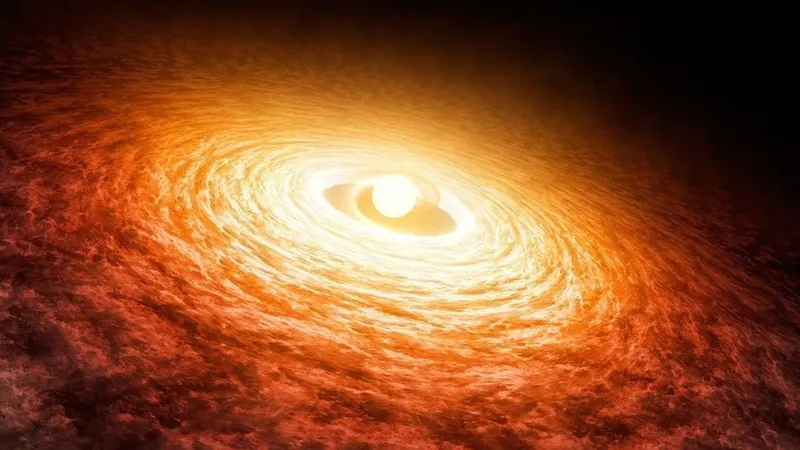
Hubble Discovers a Stellar Mystery: FU Orionis Brightness Surges 100 Times!
2024-12-12
Author: Ming
NASA's Groundbreaking Observations of FU Orionis
NASA's Hubble Space Telescope has made groundbreaking observations of FU Orionis (FU Ori), a young star in the constellation Orion known for its fascinating brightness changes. This star has captivated astronomers since its brightness soared by an astonishing factor of 100 back in 1936, making it one of the brightest young stars recorded in history.
Hotter Than Previously Thought
Recent assessments of FU Ori have unveiled unexpected details about its accretion disk, which now appears to be much hotter than previously thought, with temperatures soaring to a staggering 16,000 Kelvin—almost three times hotter than the surface of our Sun! This raise in temperature changes everything we know about the star and its formation.
Innovative Research Methods
Publishers of the study highlighted in The Astrophysical Journal Letters utilized Hubble's Cosmic Origins Spectrograph (COS) and Space Telescope Imaging Spectrograph (STIS) to investigate the inner edge of the accretion disk. Researchers initially aimed to validate existing models regarding the disk's temperature, but they were caught off guard by the heightened temperatures near the star.
Surprising Results and Their Implications
Lynne Hillenbrand, a professor at Caltech and co-author of the study, expressed her astonishment: "We were not expecting it. The fact we saw so much extra brightness in the ultraviolet light was the big surprise."
The Cause Behind Extreme Temperatures
What has intrigued scientists further is the cause behind these extreme temperatures. The study suggests that a hot shock wave created when material from the disk collides with the surface of FU Ori generates intense ultraviolet light. This finding poses challenges to prior models of FU Ori and implies that the process of accretion is much more complicated than we had previously believed.
Implications for Planet Formation
These revelations could have profound implications for how we understand planet formation. Planets developing far from FU Ori may be exposed to various chemicals released during the star's explosive outbursts. However, those that form closer to the star face potentially catastrophic fates, as they could be destroyed or dramatically altered due to rapid inward migration during these violent events.
Ongoing Research and Future Insights
Ongoing research will analyze more spectral data from Hubble, helping to deepen our understanding of FU Ori's environment and its impact on nearby planetary systems. This exciting study not only enhances our insights into the life cycle of young stars but also opens up new perspectives on the intricate processes that govern stellar evolution and planetary formation.
Conclusion: Looking to the Stars
As scientists continue to explore the mysteries of the universe, shift your gaze to the stars and see how our understanding is evolving at the speed of light!

 Brasil (PT)
Brasil (PT)
 Canada (EN)
Canada (EN)
 Chile (ES)
Chile (ES)
 Česko (CS)
Česko (CS)
 대한민국 (KO)
대한민국 (KO)
 España (ES)
España (ES)
 France (FR)
France (FR)
 Hong Kong (EN)
Hong Kong (EN)
 Italia (IT)
Italia (IT)
 日本 (JA)
日本 (JA)
 Magyarország (HU)
Magyarország (HU)
 Norge (NO)
Norge (NO)
 Polska (PL)
Polska (PL)
 Schweiz (DE)
Schweiz (DE)
 Singapore (EN)
Singapore (EN)
 Sverige (SV)
Sverige (SV)
 Suomi (FI)
Suomi (FI)
 Türkiye (TR)
Türkiye (TR)
 الإمارات العربية المتحدة (AR)
الإمارات العربية المتحدة (AR)